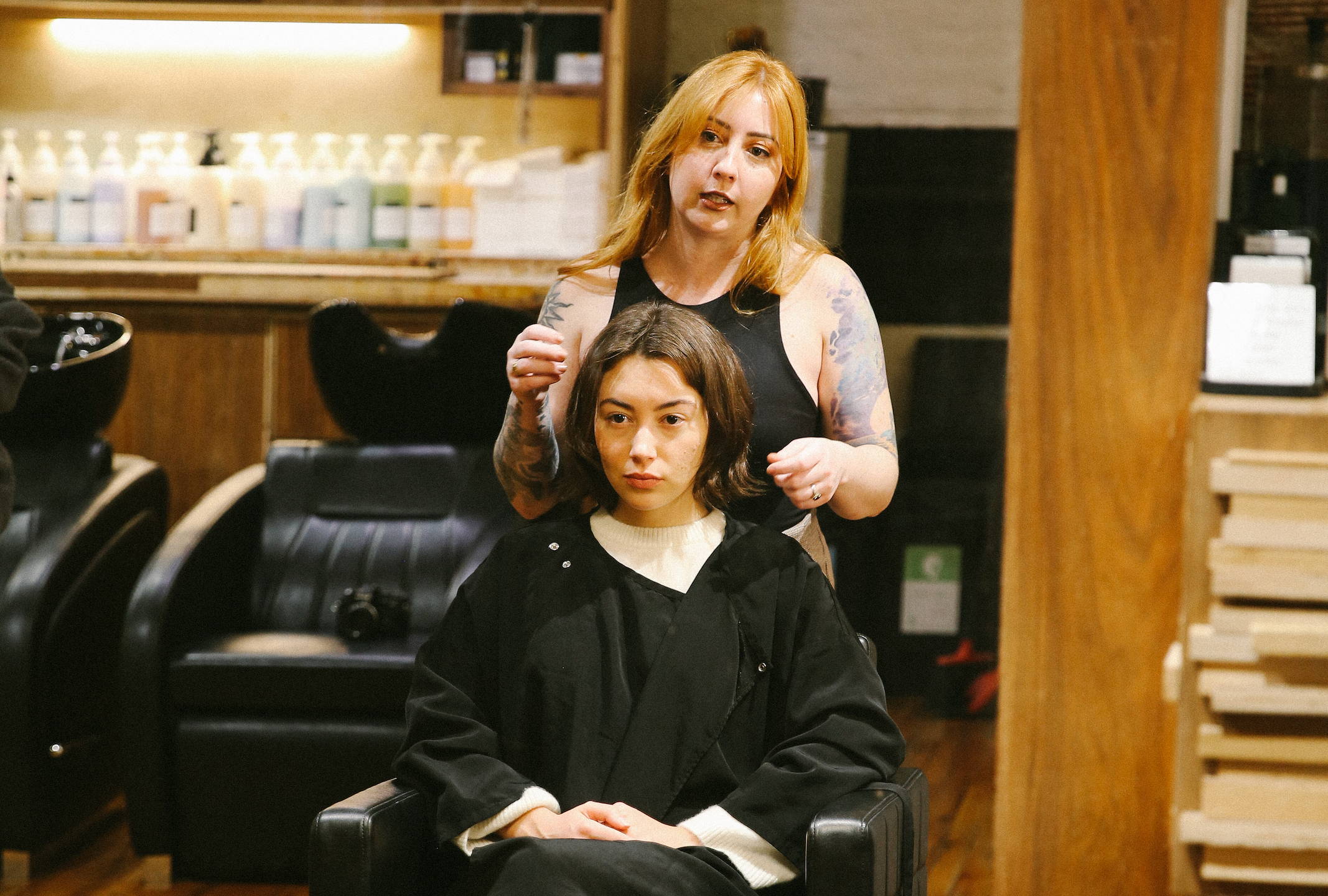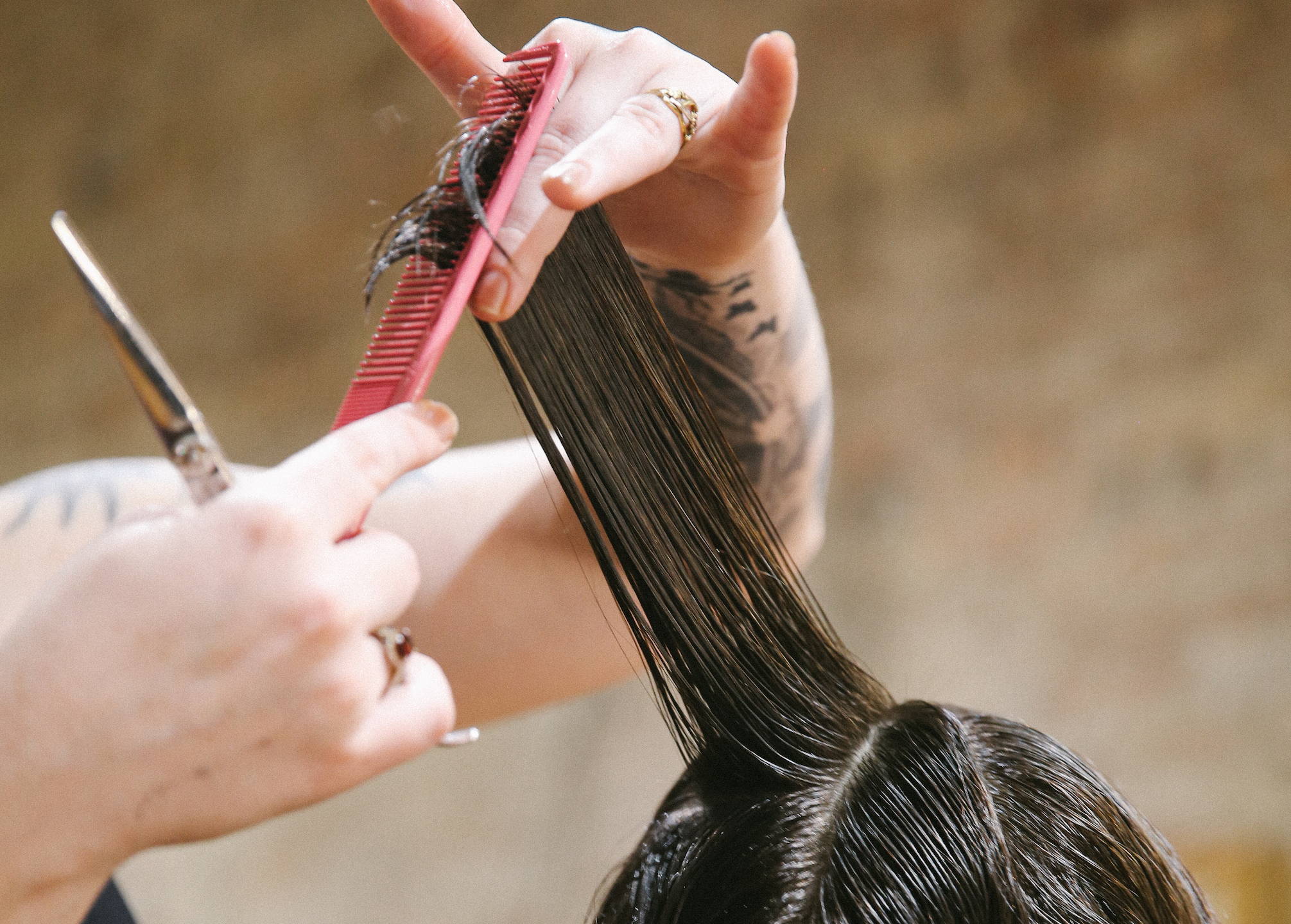Free Carbon Neutral Shipping On Orders $75+, Plus Free Samples!
Buy Now and Pay Later in 4-interest free installments with Klarna
Free Carbon Neutral Shipping On Orders $75+, Plus Free Samples!
Buy Now and Pay Later in 4-interest free installments with Klarna
Rendre la beauté durable
We Are Circular
Ajouter une description, des images et des liens au méga menu
Une colonne sans paramètres peut être utilisée pour créer un espace.
Lien vers vos collections, vos ventes et même des liens externes.
Tried & True Favorites to Protect Your Salon Color
Hair donation organizations have reported a significant increase in the number of hair donations since the start of the pandemic. When something catastrophic happens, people want to do what they can to feel better and help others, and donating hair is one way they can give back. Hair loss from cancer or alopecia can be a major blow to one’s self-esteem and self-image; and wigs can be expensive and cost prohibitive, especially for children. Some cultures even believe in hair donation as a form of worship. If you’re thinking of becoming a hair donor, you’ve come to the right place. Because we’re breaking down everything you need to know about donating hair — including healthy hair tips to prepare and what to do with your donated hair.
Hair donation is the selfless act of donating hair to an organization that makes wigs for cancer patients and those suffering medical hair loss due to things like radiation therapy, trichotillomania and other medical conditions. Hair donor organizations like Locks of Love provide custom-made wigs to disadvantaged children and young adults who have suffered hair loss as a result of things like alopecia, burn trauma, and cancer treatments. All nationalities, genders, ages, natural colors and hair types can be donated, except for highly damaged hair that breaks when lightly tugged. Hair donations should be at least 10 inches from the cut end to the tip, healthy and completely dry; mold and bacteria can grow on wet hair and make it unusable.
Extensive hair loss at any age can be traumatic, but losing hair prematurely due to illness or an accident can be devastating to one’s self-esteem. Fortunately, people with long, healthy hair can choose to donate theirs. When you donate your eligible hair, hair donor organizations can use it to make a wig for someone in need. Once you donate your hair, the organization prepares it for incorporation into a wig. Completed wigs are donated to wig banks that distribute them at no or low cost.

A good amount of pre-planning goes into the hair donation process, so if you’re ready to become a hair donor, there are some things to know before you cut your hair. There are a number of nonprofits that help create wigs and hairpieces for people suffering hair loss. Hair donation organizations like Hair We Share, Locks of Love, Wigs for Kids and Children With Hair Loss share the common goal of providing hair replacements to people who need them, but each serves different groups with slightly different missions. But if you are thinking of donating your hair, there are a few requirements for hair donation that apply to all. Let’s take a closer look at those below.
Anyone can cut your hair for donation as long as the proper guidelines are followed, but we recommend seeing a Davines stylist for the cleanest possible result. Whether you're cutting your hair yourself or at the salon, below is exactly how to donate hair, no matter your natural hair texture, to ensure a successful donation.
The minimum length requirement needed for a hairpiece is 10 inches tip to tip. Layered hair is acceptable if the longest layer is 10 inches, and curly hair may be pulled straight to measure the minimum 10 inches.
Before donation, hair should be freshly washed, in its natural state, and free of styling products. Hair must be clean and dry. Wet hair will mold during shipping and will be thrown away.
Hair that has been permed, color-treated, or highlighted is not usable due to a chemical reaction that occurs during the manufacturing process. Temporary coloring or highlights that wash out are acceptable but must be completely washed out before cutting. Most organizations will accept gray hair, but always check with that specific organization first.

Tie hair into at least four sections (six are even better) around the head. Hair pulled into one ponytail results in a loss of up to four inches of hair. To separate your hair correctly, make a center part. Starting from the center part, part your hair again over the top of each ear. This will create four sections of hair. To create four ponytails, tie the hair in front of each ear into ponytails, and then tie the hair behind each ear into ponytails.
Make sure each ponytail or braid is tightly secured with a hair tie and cut above the hair tie. Loosely wrapped hair tends to come out of its band when shipped, making it unusable.
Wrap all ponytails in one piece of tissue paper and seal in a plastic bag. Send your hair donation to the appropriate address for the charity.
After you’ve made the decision to donate your hair and have gone through the process of growing it out, it’s time to decide where to donate it. Here are a few organizations to get you started on your search:
Hair We Share is based in Long Island, New York. With over 50 years experience, they are a second generation, family owned custom wig design business. Hair We Share was founded in 2014, after years of working with all types of hair loss including chemotherapy, alopecia, head trauma, accident and burn victims.
One of the original pioneers of hair donation for children with long-term hair loss, Locks of Love is one of the few groups that accept shorter cuts, chemically treated, and gray hair, selling these not suitable for wig donation strands to offset the expense of wig-making.
Wigs For Kids is a nonprofit organization that helps children suffering from hair loss stemming from chemotherapy, radiation therapy, alopecia, trichotillomania, burns, and other medical causes. Since 1981, this organization has been providing custom-made hair replacements for young people affected by hair loss.
For over 20 years, Children With Hair Loss has provided human hair replacements at no cost to children and young adults facing medically-related hair loss.
Donating your hair is a simple way to make a huge difference in someone else's life, and all it takes is a little bit of research and a healthy hair care routine. Especially when you’re considering donating your hair, it’s important to keep your hair healthy with high-quality hair products — DEDE Shampoo and DEDE Conditioner will offer a gentle daily cleanse to avoid over-drying your hair before donation. If you’re ready to become a hair donor, book an appointment with a Davines stylist in your area and we’ll help you make the process as seamless as possible.
by Jaclyn LaBadia, featured contributor
S’abonner pour rester à l’affut des ventes et promotions, les lancements de nouveaux produits et bien plus…
Abonnez-vous à notre newsletter pour bénificier de la livraison gratuite sur votre première commande.
La soumission de ce formulaire confirme que vous acceptez de recevoir les avis de lancement, les promotions et les nouvelles marketing de Davines North America Inc. par courriel.



Laisser un commentaire
Les commentaires sont approuvés avant leur publication.